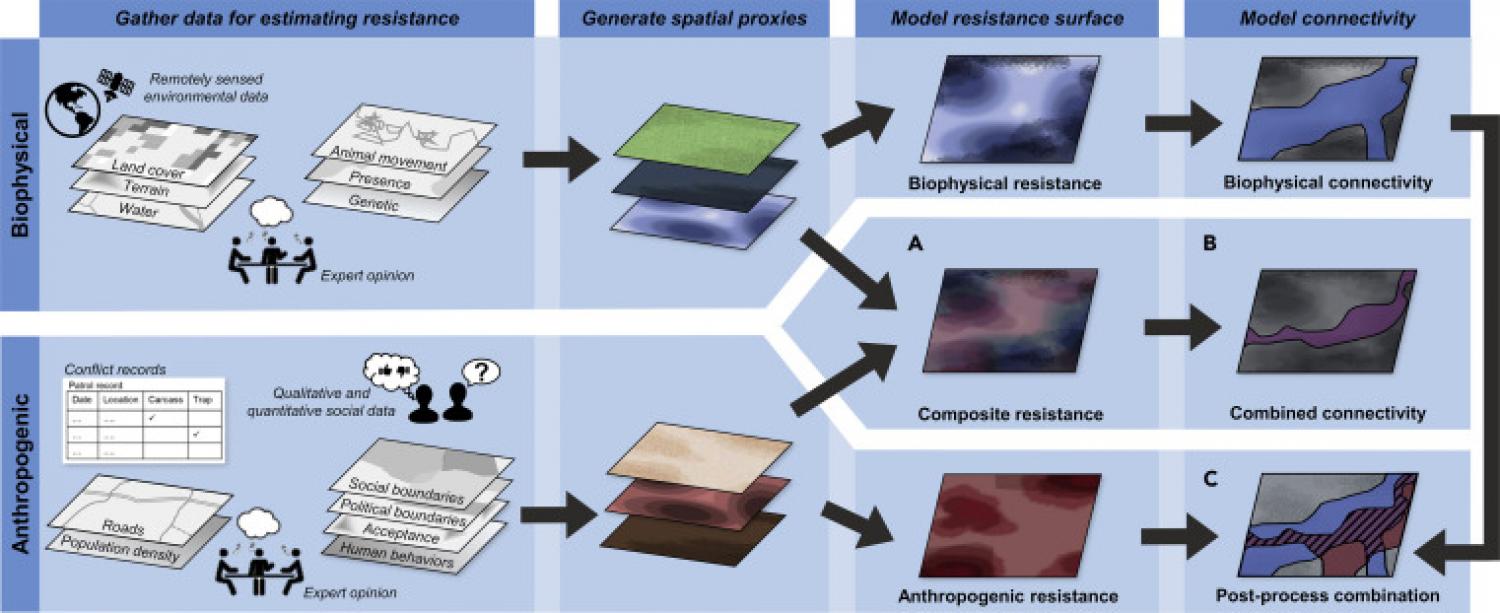
Maintaining or restoring connectivity among wildlife populations is a primary strategy to overcome the negative impacts of habitat fragmentation. Yet, current connectivity planning efforts typically assess landscape resistance, the ability of organisms to cross various biophysical elements in a landscape, while overlooking the various ways in which human behaviors influence connectivity. Here, we introduce the concept of “anthropogenic resistance” to capture the impacts of human behaviors on species' movement through a landscape. We discuss psychological and socioeconomic factors that influence the degree of anthropogenic resistance, such as the economic value or the risks posed by a species, and suggest methods to estimate and include anthropogenic resistance in connectivity analyses. Finally, we highlight how addressing anthropogenic resistance through a social-ecological perspective can lead to better outcomes for both humans and wildlife. We call for multidisciplinary approaches in connectivity planning to ensure the functionality of landscapes and sustainability of populations in the long term.
